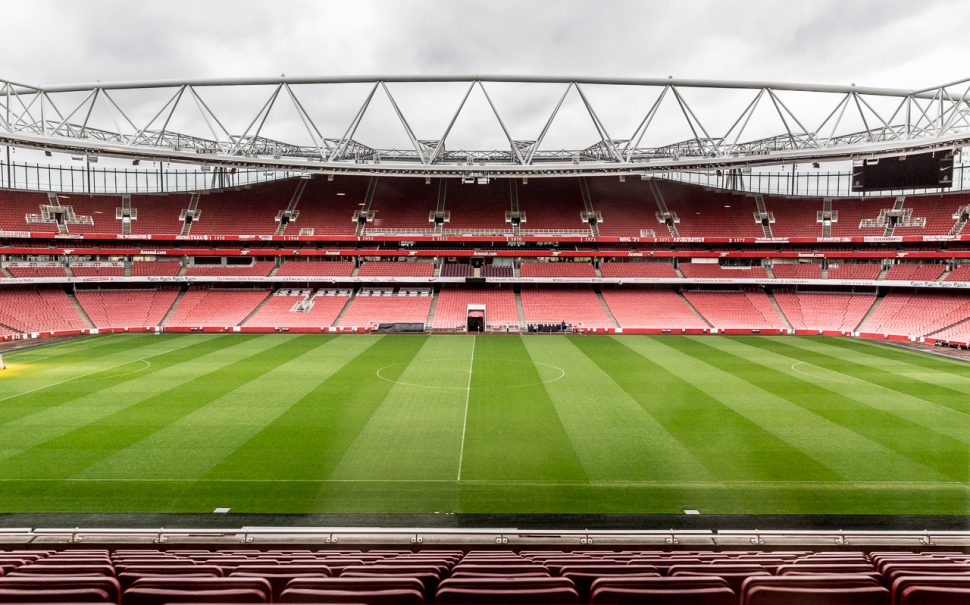Arsenal’s average home attendance was over three times higher than any other WSL team this season despite suffering a slight drop in numbers.
According to FBref, 28,807 people came to see Arsenal at home per matchday, with champions Chelsea a distant second with an average attendance of 9,373.
The Gunners played nine of their 11 home games at the Emirates, making matches more accessible to local fans compared to their alternative ground in Borehamwood, Hertfordshire.
Arsenal men’s season ticket holder Adrian Lewis said: “It makes a big difference for us, and I’m not sure I would be as excited to schlep up to Borehamwood.
“Unless you see the players live you only have a fraction of the appreciation of their skill and teamwork.
“I hope that the receipts are also able to feed back into the women’s team and help us compete in the transfer market on fees and wages, as well as starting to bridge the monstrous wage gap to the men’s teams.”
This was the first season that Arsenal attempted to play every home match at the Emirates, but were ultimately forced to move two matches due to scheduling issues caused by their Champions League participation.
They were not the only side to use the main stadium more – Leicester City and Aston Villa played all 11 home matches at their main stadium – but no other side used the main stadium more than three times.
Eight of the top 13 most attended matches took place at the Emirates and Lewis points to the more family-friendly atmosphere as a key positive of the matchday experience.
Lewis said: “The atmosphere is passionate but far more relaxed with none of the aggro of the men’s games.
“It used to be grim taking the boys to the matches when they were young and having the guys behind us scream profanities for ninety minutes.
“The atmosphere at the women’s games is incredibly welcoming and open, although it does amuse me that the chants have evolved to put a twist on the men’s ones and are becoming a bit edgier.”
Nicole Wu attended a WSL match for the first time this year, visiting Stamford Bridge in January for Chelsea’s 1-0 win over Arsenal.
She pointed to living close to the stadium as a key factor to attending, having been sucked in by the matchday atmosphere.
However, Wu still feels that the atmosphere at a men’s game is too hostile to make her feel comfortable attending alone.
She said: “As a female person of colour, football matches feel like oppressive and dangerous places to exist.
“We all know the statistics about domestic abuse following an men’s England match and men’s football has a clear issue of cracking down violence and abuse.
“I simply don’t feel comfortable existing in those spaces.”
On the other hand, she found the atmosphere at a women’s football match far less intimidating and as a result found herself engaging in the sport much more.
She said: “Because football has always had such a male association, I’ve never taken the time to enjoy watching it and study the game.
“I found myself predicting the patterns of the game and identifying players I respected in a way that I’ve never done before.”
Although women’s football is attracting new fans, there has still been a falloff in the overall attendance levels.
On average, 6,985 people went to each WSL match this season, 400 fewer than last year.
Manchester United attracted over 3,500 fewer fans per matchday this season, while Liverpool saw the biggest rise, gaining nearly 2,500 extra fans each match.
One key reason for this drop could be due to the ‘Lionesses Effect’ fading, as interest in women’s football has typically peaked in tandem with major tournaments, most notably after England won the Euros in 2022.
Both Lewis and Wu pointed to that moment as a turning point for their interest in the women’s game and, should England succeed in this summer’s tournament in Switzerland, a similar boom in popularity is expected.
Image credit: Dave Pearce via Flickr under the Creative Commons 2.0 licence.





Join the discussion